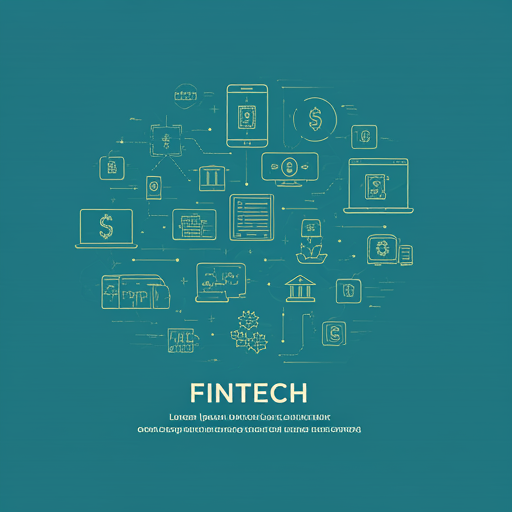Introduction to Fintech Innovations
Defining Fintech and Its Importance
Fintech , or financial technology, represents a transformative approach to delivering financial servicds through innovative technologies. It encompasses a wide range of applications, from mobile banking to blockchain solutions. These innovations enhance efficiency and accessibility in financial transactions. Many people benefit from these advancements.
Moreover, fintech plays a crucial role in democratizing financial services. By leveraging technology, it allows underserved populations to access banking services. This is a significant step toward financial inclusion.
Additionally, fintech fosters competition among traditional banks and new entrants. This competition drives down costs and improves service quality. Consumers enjoy better options and lower fees.
In essence, fintech is reshaping the financial landscape. It is an exciting time for the industry.
Overview of Current Trends in Fintech
Current trends in fintech highlight significant advancements in various areas. Key trends include:
These trends indicate a shift towards more efficient, user-friendly financial services. The landscape is evolving rapidly.
The Role of Blockchain Technology
Understanding Blockchain Basics
Blockchain technology serves as a decentralized ledger system. It records transactions across multiple computers securely. This ensures that the data cannot be altered retroactively. Security is a top priority in financial transactions.
Key features of blockchain include:
These characteristics make blockchain a powerful tool for various industries. Its potential applications are vast and promising.
Blockchain’s Impact on Banking Security
Blockchain technology significantly enhances banking security through its decentralized architecture. By distributing data across multiple nodes, it reducez the risk of centralized attacks. This structure makes it difficult for malicious actors to manipulate information. Security is essential in financial transactions.
Moreover, blockchain employs cryptographic techniques to secure data integrity. Each transaction is encrypted and linked to the previous one. This creates a tamper-proof chain of records. Tamper-proof systems are vital for trust.
Additionally, real-time transaction monitoring is possible with blockchain. This allows for immediate detection of suspicious activities. Quick responses can mitigate potential fraud. The implications for banking security are profound and transformative.
Cryptocurrencies and Their Influence
How Cryptocurrencies Are Reshaping Payments
Cryptocurrencies are revolutionizing payment systems by offering faster and more secure transactions. Traditional banking methods often involve delays and high fees. Cryptocurrencies eliminate intermediaries, reducing costs significantly. Lower costs are appealing to consumers.
Additionally, cryptocurrencies provide global accessibility. Users can transact across borders without currency conversion issues. This opens new markets for businesses. Expanding markets is crucial for growth.
Moreover, the use of blockchain technology enhances transaction transparency. Each transaction is recorded on a public ledger, ensuring accountability. Accountability builds trust among users. The shift towards cryptocurrencies is reshaping the financial landscape.
The Rise of Decentralized Finance (DeFi)
Decentralized Finance (DeFi) is transforming traditional financial systems by utilizing blockchain technology. It enables users to access financial services without intermediaries. This reduces costs and increases efficiency. Efficiency is key in finance.
DeFi platforms offer various services, including lending, borrowing, and trading. Users can earn interest on their cryptocurrency holdings. This creates new investment opportunities. Opportunities are expanding rapidly.
Moreover, DeFi promotes financial inclusion by providing access to unbanked populations. Individuals can participate in the financial ecosystem without a bank account. This is a significant advancement for many. The growth of DeFi is reshaping the financial landscape.
Artificial Intelligence in Banking
AI-Powered Customer Service Solutions
AI-powered customer service solutions are increasingly utilized in banking to enhance user experience. These systems can analyze customer inquiries and provide inst responses. Speed is essential in customer service .
Key features of AI in banking include:
These innovations streamline operations and improve customer engagement. Engaged customers are more likely to remain loyal. The integration of AI is reshaping customer interactions in banking.
Risk Management and Fraud Detection
Risk management and fraud detection are critical components of banking operations. Artificial intelligence enhances these processes by analyzing vast amounts of transaction data. This analysis identifies patterns indicative of fraudulent activity. Patterns can reveal hidden risks.
Furthermore, AI algorithms adapt to emerging threats in real time. They continuously learn from new data inputs, improving their accuracy. Continuous improvement is essential for effective fraud prevention.
Additionally, AI can assess credit risk by evaluating borrower profiles. This allows for more informed lending decisions. Informed decisions reduce potential losses. The integration of AI in risk management is transforming banking practices.
The Future of Banking: Predictions and Challenges
Emerging Technologies to Watch
Emerging technologies are poised to reshape the banking landscape significantly. Innovations such as quantum computing promise to enhance data processing capabilities. Faster processing can lead to improved decision-making. Speed is crucial in finance.
Additionally, advancements in biometric authentication are enhancing security measures. These technologies reduce the risk of identity theft. Identity protection is a top priority for banks.
Moreover, the integration of Internet of Things (IoT) devices is expected to streamline customer interactions. IoT can provide real-time data for personalized services. Personalization increases customer satisfaction. The future of banking will be defined by these transformative technologies.
